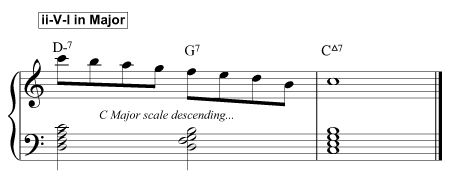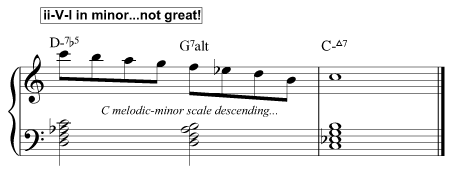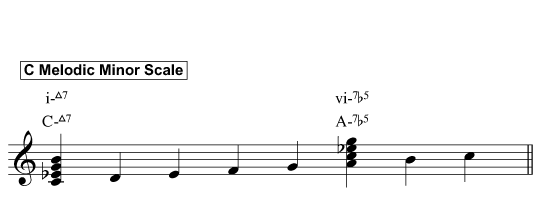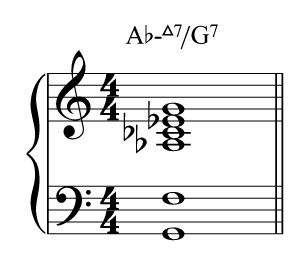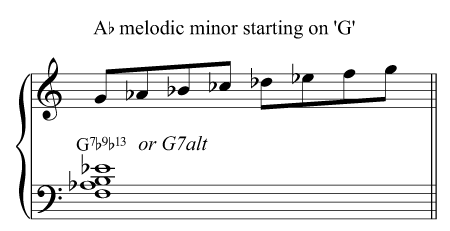Melodic Minor Harmony

Let's take a look at how we can use the Melodic Minor Scale. This scale has some benefits and detriments over the Major scale. One benefit is that there are really no avoid notes in the scale. However a detriment is that we can not use only one melodic minor scale while improvising. We need to shift between different melodic minor scales.
ii-V-I in Major
Take a look at the example below. This is a ii-V-I progression in the key of C. You'll see from this example that we can use the C Major scale over the entire progression. This makes it easier when improvising. We can simply think "O.K. I have a ii-V-I in the key of C so I can use my C Major scale to improvise."
ii-V-I in minor
Now, take a look at the example below. This is a ii-V-i in minor. You'll notice that the chords are changed to reflect the minor tonality. The G7alt has a flatted 9th and would normally have a flat 13 as well, but I am simplifying the voicings here. However, pay close attention to the scale...C melodic minor. The scale just downright does not work over the D-7b5 chord. It is not bad, but certainly not great over the G7alt chord. It would work wonderfully over the C-Major7 chord though.
What scale should I use over a minor ii-V?
You will want to use (3) different scales over a minor ii-V. Let's take a look at the ii-7b5 chord. You'll see from the example below that it is derived from the melodic minor scale. It is the 6th mode of the melodic minor scale.
If we play the C melodic minor scale from A to A, we get this:
You might hear musicians or theorists refer to the 6th mode of the melodic minor scale as being the "2 chord" within the key. This can be confusing, but now you should see that 6th mode of the melodic minor scale is the only mode of the scale that gives you a ii-7 sound. In this case, it is a ii-7 with a flatted fifth.
Here's a trick. When playing a minor 7 flat 5 chord, think about the melodic minor scale built on the minor 3rd. This is the scale that you want to use for improvisation. So....
- A-7b5 = C melodic minor
- D-7b5 = F melodic minor
- F-7b5 = Ab melodic minor
- Bb-7b5 = Db melodic minor
- ...and so on
V7 Altered
We will cover this in more detail in our upcoming Melodic Minor Harmony lesson (available to members later this week and on DVD next month), but for now let's just talk about the "tricks" that you can use on the V7alt chord.
When you see a V7 chord with or without tension alterations. So, with the fancy flatted 9ths and 13ths or without, you can often use the altered scale. The altered scale is derived from the melodic minor scale.
The 7th mode of the melodic minor scale gives us an altered sound. Take a look at the Ab melodic minor scale below. You'll see that on the 7th note (G), if we use notes from that scale to create a chord on that note G, we get a very cool sound. You'll also notice that it creates a lot of tension on this note.
Here is another way to look at it. If we break this chord into 2 hands, we can play a R7 in the left hand and super-impose an Ab-Maj7 chord on top of the G7 chord shell.
Now, let's reduce that G7 chord into a left-hand voicing. You'll see here that the voicing has the 3rd and 7th of the chord, but also the b9 and b13 (#5). If we play the Ab melodic minor scale in the right hand, we get the G altered scale.
Where do we go from here
Later this week, a Melodic Minor Harmony lesson will be released which will go into much more detail about melodic minor. If you are a member, login to see that lesson.
